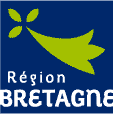Frequently Asked Questions
- What's the difference between the DGD database and the list of paralogs provided by the Ensembl website?
- How can I ask for the addition of another species?
- I'm studying a specific gene and I'm sure that this gene belongs to a group of duplicates gene, but I didn't find any information in DGD?
- My query using an external identifier didn't return me any results, why?
- I've noticed that the functional annotation data, which can be included during the export, is outdated, what can I do?
- I've many genes I would like to analyze and the search or browse forms do not fit very well to this task. Do you provide a direct access to the database?
- Where do I send bugreports, fixes, enhancements, t-shirts, money, beer & pizza to DGD team?
- Who developed the DGD database?
- First, the Ensembl website provides a list of paralogs without chromosomal location and this list is not limited to a specific chromosomal location (paralogs could be on another chromosome or in another far genomic location on the same chromosome). Moreover, the information provided by Ensembl are not well-fitted for high-throughput analyzes (i.e. to export the paralogs data). You can by-pass this limit by using the Biomart service. But, in this case, you will get raw information (no groups of co-located duplicated genes, but a list of paralogs genes with their chromosomal locations). And, finally, for unknown reasons, we have notice that the lists of duplicated genes provided by DGD are more complete than those provided by Ensembl (see the published article for more details - REF).
- If your species meet the requirements to be included in the DGD workflow (peptides database, genes with chromosomal locations and genome annotation), you should use the contact form to ask for the addition of your species. Your request will be carefully considered.
- DGD defines groups of duplicated using Rost's Blast parameters analysis (Rost, 1999) and using a maximum genomic distance of 2.5 MB between two putative duplicated genes. If your gene is not present in a group of duplicated genes, it may be due to low Blast parameters values or a genomic distance greater than 2.5 MB. If your gene doesn't meet this limitation, feel free to contact the research team, we will do our best to solve the case.
- DGD is based on the peptide sequences and gene annotations data from Ensembl. To provide a more global search mode, we have implemented a cross-reference (xref) search mode. But, these xref are not always complete (i.e. a RefSeq ID may not be associated with an Ensembl ID) and may depend on the species. Sorry for the inconvenience.
- Several times a year, we update the annotation database (i.e. GOA database). If you have notice that our database is clearly outdated (due to a major update in a specific species), please use the contact form to let us know the existence of this update: we will process to an update process.
- Yes! We are glad to announce that a web-service (SOAP protocol) is available to access directly to the Duplicate Gene Database (see the tutorial page for more details).
- You can contact the DGD team here.
- The DGD database was created by Frédéric Lecerf from UMR Agrocampus OUEST - INRA Génétique Animale (Rennes, France). The website and webservice were developed by Anthony Bretaudeau from GenOuest BioInformatics Platform (Rennes, France), with funding from the Brittany Region. DGD is hosted by the GenOuest Platform.

